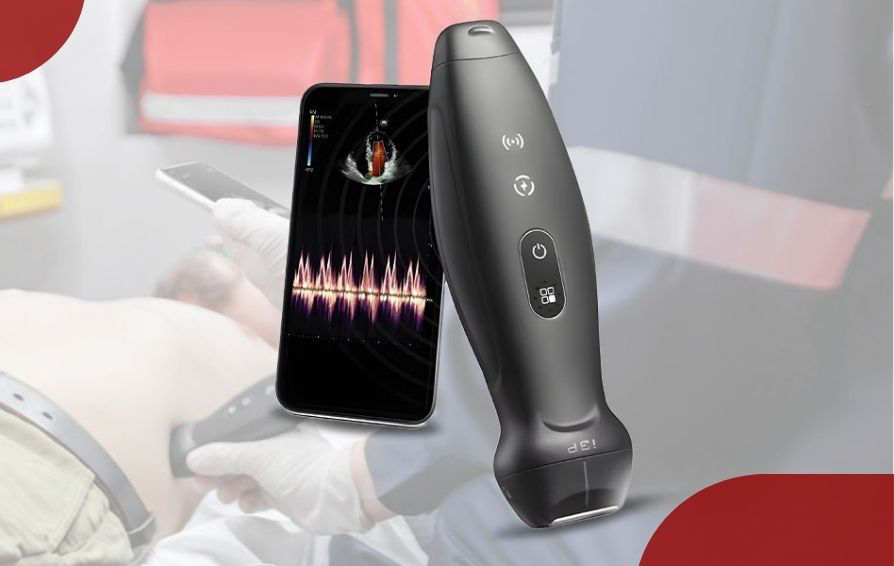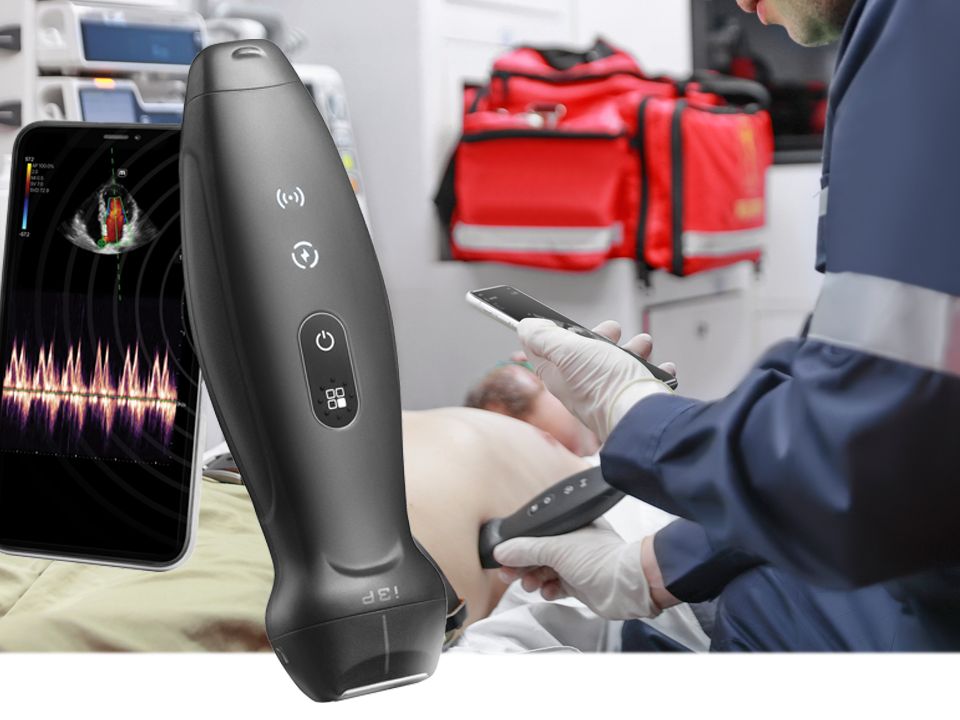Handheld Ultrasound in Specialty Care Applications
09-09-2025

In specialty care settings, there’s a growing demand for imaging solutions that are flexible, immediate, and easy to implement without compromising diagnostic capability. Handheld ultrasound technology helps address these needs, enabling enhanced and more efficient point of care diagnostics.
Explore handheld ultrasound systems that are used in specialty care applications and what clinicians and healthcare administrators need to consider to adopt this technology confidently.
Key Benefits of Handheld Ultrasound Systems in Specialty Care Applications
Handheld ultrasound offers several advantages over conventional ultrasound systems, including:
- Portability: Their compact size allows for both bedside assessments and use in remote or resource-limited settings
- Ease-of-use: User-friendly interfaces help enable quick assessments, especially in emergencies
- Quick feedback: Immediate feedback during treatment or follow-ups means clinicians can make more timely decisions
Handheld Ultrasound in Rheumatology
In rheumatology, conditions like inflammatory arthritis often present with complex inflammatory patterns that evolve. Waiting for scheduled imaging can slow diagnosis and delay treatment.
Handheld ultrasound offers a way to overcome this challenge by putting diagnostic capability directly into the hands of the rheumatologist. This has many advantages, including:
1. Early Detection and Monitoring of Joint Inflammation
Handheld ultrasound can visualize inflammation-related changes such as synovitis, tenosynovitis, and bone erosions. This enables clinicians to confirm suspected disease activity and begin treatment immediately.
2. Guidance for Injections
Handheld ultrasound can play an essential role in guiding intra-articular injections. With real-time visualization, clinicians can confirm needle placement before delivering medication, which can help minimize the chance of misplaced injections or patient discomfort.
3. Monitoring Disease Progression and Treatment Response
Inflammation in rheumatic disease makes consistent monitoring essential. Handheld ultrasound allows clinicians to document structural joint changes and soft tissue inflammation between formal imaging sessions to guide long-term treatment decisions.
Handheld Ultrasound in Sports Medicine
Whether treating professional athletes or other patients, the ability to assess injuries on the spot can mean the difference between timely rehabilitation and prolonged downtime. Handheld ultrasound offers real-time imaging that supports faster decisions for sports medicine teams as well as greater overall efficiency and more responsive care.
Applications for handheld ultrasound in sports medicine include:
- Immediate injury screening: An athlete experiences knee pain mid-game. Instead of waiting hours or even days for imaging, the clinician can perform a handheld scan on the sideline or in the locker room
- Tracking healing progress: In follow-up sessions, sports medicine providers use handheld ultrasound to compare soft tissue healing week over week. This information can help guide changes in rehabilitation intensity and recovery timelines based on actual tissue response, not guesswork
- Guiding precise treatments: For procedures like tendon sheath injections or aspirations, handheld ultrasound enables targeted needle placement. This can help minimize risk and ensure the treatment reaches the intended site without damaging nearby structures
Precision is everything when managing pain, especially in chronic or complex cases. Whether it’s identifying the source of discomfort or guiding an interventional procedure, minor errors can lead to poor outcomes, prolonged recovery, or unnecessary patient distress. Clinicians can incorporate handheld specialty care ultrasound into pain management protocols for a precise and real-time view into the target area.
Here’s how handheld ultrasound supports pain management:
- Improved targeting for injections: Whether performing a lumbar facet injection or a peripheral nerve block, clinicians can guide the needle with greater precision using handheld ultrasound. For example, a 2024 pilot study suggests that portable ultrasound guided intra-articular injections may offer several advantages over palpation-guided injections, including improved accuracy
- More accurate diagnosis of soft tissue pain: With handheld ultrasound, providers can evaluate tendons, bursae, and fascia to find inflammation, fluid buildup, or thickening and better understand the patient's challenges related to chronic pain. According to a 2025 review, studies have demonstrated that ultrasound technology enhances diagnostic accuracy of a range of soft tissue injuries, like rotator cuff and ligamentous injuries
- Monitoring response to treatment: Clinicians can use follow-up imaging to check for reduced swelling or improved tissue mobility after a session. This supports objective documentation and tailored treatment planning
For outpatient pain clinics and spine centers, handheld ultrasound technology offers a practical way to elevate care without adding overhead. These systems are portable enough to move from room to room and flexible enough to support a wide range of procedures.
Implementing Handheld Ultrasound Technology in Specialty Care
Adopting handheld ultrasound involves thoughtful planning, stakeholder alignment, and structured integration into existing workflows.
1. Define Clinical Objectives
Identify the specific goals that handheld ultrasound may help clinicians achieve. This could include:
- Reducing time for diagnosis in musculoskeletal injuries
- Guiding more precise joint or nerve injections
- Improving bedside monitoring in chronic pain or rheumatology patients
By setting clear, measurable objectives and milestones, decision-makers can select devices and define return on investment benchmarks across the organization.
2. Engage Key Stakeholders Early
Implementation should involve all departments affected by the implementation. For example:
- Clinicians and care teams need to understand how handheld ultrasound will change their workflows and documentation
- IT teams should evaluate cybersecurity, device integration, and maintenance protocols
- Finance and procurement teams may need to assess cost structures, warranty options, and replacement planning
3. Invest in Training
Hands-on training is essential for consistent use and the most accurate results. Training options may include:
- In-house workshops or vendor-led demos
- Online certified ultrasound courses
- Peer-to-peer mentoring among experienced users
4. Carefully Select a Vendor
When selecting a vendor, consider factors like the quality of imaging the product offers, compliance with cybersecurity standards, and the ability to meet the needs of specific teams that will be using the technology.
Mindray North America offers more than equipment — we provide partnership, performance, and long-term value. Our handheld ultrasound technology was developed to achieve high-quality imaging across multiple specialties.
For example, the TE Air Wireless Handheld Ultrasound connects to an ultrasound system. Clinicians can use it independently with a mobile device or with systems such as the TE X Ultrasound System. The option to seamlessly transition from a handheld to a cart-based ultrasound helps healthcare teams improve efficiency in various environments.

